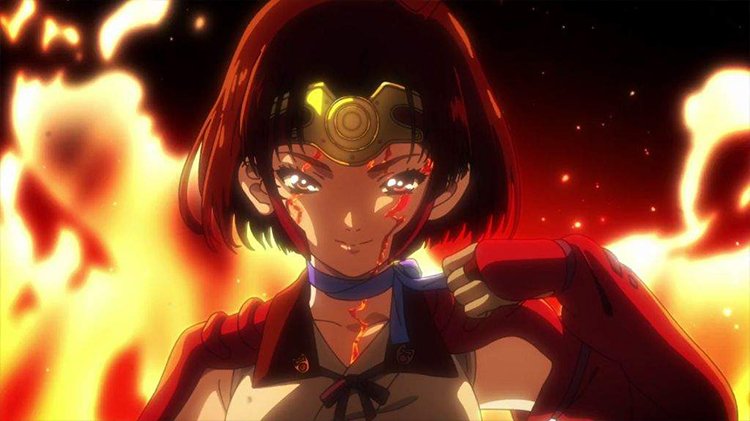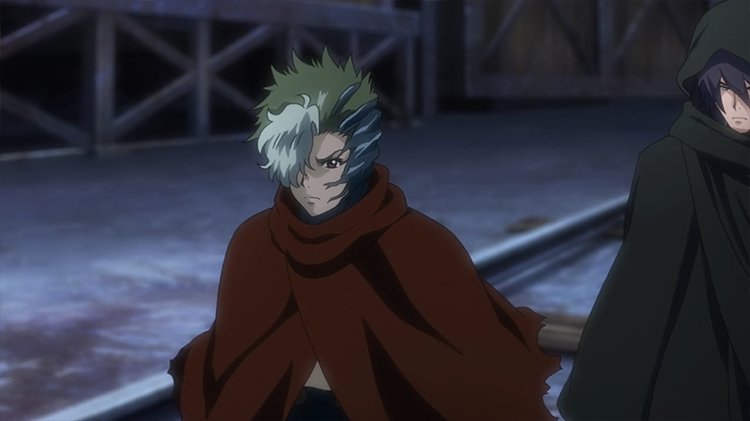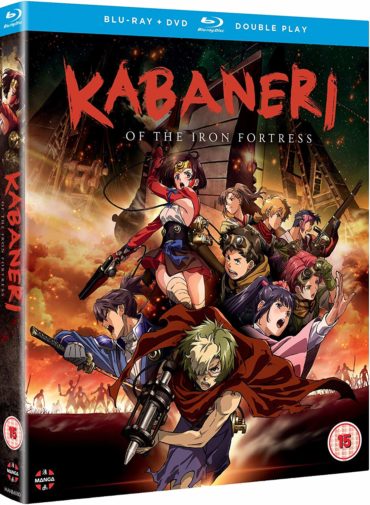Kabaneri of the Iron Fortress Review
In the midst of an industrial revolution, a horrific new virus breaks out that transforms humans into flesh-eating creatures with a never-ending appetite. The sole way to kill these beings, known as Kabane, is to pierce their steel-coated hearts; however, if bitten by one of the monsters, the victim finds themselves with a fate worse than death, doomed to join the ranks of the undead. Only the most well prepared and fortified of civilisations prosper in this hellish landscape, as is the case with the island of Hinomoto, where mankind has erected a wall to protect themselves from the nightmare that lurks beyond. There is just one way in and out of these giant fortresses, aboard heavily-armoured trains, which are operated by young men such as Ikoma, an engineer. Having created a new weapon to combat the Kabane, Ikoma bides his time waiting for his opportunity to fight with his invention, but little does he know, that chance will come much sooner than he could have expected…
Unless you’ve been living under a rock for the past six years, you probably know that the 2012 adaptation of Attack on Titan was an absolutely mammoth success. It broke through to the mainstream in a way that not many shows manage these days, becoming one of the most iconic anime to come out of the decade, but when Studio Wit decided to produce a follow-up, they had a bit of an issue: they’d run out of material to adapt. Not wanting to make a much derided filler season, consisting of material made up by the writers rather than adapted from the manga, they had another idea instead: to create a new, original show with enough in common with Attack on Titan to pull in the same audience, but without having to compromise the story or characters of their golden goose as they waited until they were ready to make a second season. The result is 2016’s Kabaneri of the Iron Fortress, or as you may have heard it lovingly referred to, Attack on Trains, which saw Attack on Titan directors Tetsurou Araki and Shuuhei Yabuta team up with famed writer Ichiro Okouchi (Code Geass, Princess Principal, Devilman Crybaby) in an attempt to recapture the magic that catapulted Studio Wit into the big-time. Does Kabaneri rise above its reputation as a derivative clone or is it forever destined to live in the shadow of its counterpart?
To deal with the elephant in the room right from the get-go, yes, the Attack on Titan similarities are not only numerous but incredibly blatant. Perhaps if you went in without this knowledge, you might not notice it quite as clearly, but knowing about it going in, I was keeping a mental checklist of what gave me a sense of déjà-vu, and boy, was there a lot. From the broad strokes, such as humanity being painted into a corner by an external threat that overpowered them, protecting themselves by hiding inside walled-off cities and having the peace shattered by a sudden attack, to even more specific details like having the main character’s family killed by the lurking threat, inspiring him to seek revenge, and also having him inherit the powers of the enemy in order to try and destroy them. Despite all this though, the copycat factor isn’t as a big a deal as I think people make it out to be.
These concepts are used instead as a launchpad to do its own thing more than anything else, and it never tries to directly ape any specific arcs or plot progression, instead forging its own path. For the first half, there is a big focus on just plain survival as a train full of people are left without a home, seeking refuge before changing course after the halfway mark, making a turn into human-on human-conflict, which is strangely prescient of where Attack on Titan would end up in its third season, and this is where Kabaneri hits its stride. The survival stuff is all well and good, but it’s only when a human villain is introduced that things get more interesting, especially when they throw in a loyalty conflict with one of the main characters.
If there is another aspect where Kabaneri really carves out its own identity, it’s in its visual aesthetic, swapping out a German-inspired setting in Attack on Titan for a steampunk-inspired feudal Japan; it’s certainly one of the most unique backdrops I’ve seen for an anime in a while. This artistic change also has an effect on the action sequences too, veering away from the nape-slicing antics of Eren and company for a focus on gun combat, martial arts and traditional Japanese swordplay. Although I’d struggle to think of any sequences as impressive as those amazing 3D movement gear scenes from Attack on Titan, that doesn’t mean Kabaneri disappoints on the action front in the slightest, bringing bucket loads of kick-ass action sequences in practically every episode, with plenty of blood to keep the gore hounds among us happy to boot! The animation as a whole is fantastic really, which you’d expect from the studio behind The Ancient Magus’ Bride and Seraph of the End.
The characters in Kabaneri are probably one of the weaker parts on the whole, but aren’t the worst I’ve seen either. The issue is that there are only two protagonists, Ikoma and Mumei, and whilst Mumei is quite the interesting character, managing to walk the fine line of cool and cute with grace, Ikoma is a bit mundane. He’s the generic hero through and through, and whilst it works well enough to serve the plot, it’s not exactly anything you won’t forget soon after watching. The supporting cast is no better really, with the story coming first and foremost, relegating the majority of the secondary characters to being fairly one-note.
Produced by Studiopolis, the dub for Kabaneri of the Iron Fortress is quite a bit better than your average dub produced by other companies. Whilst there aren’t standouts amongst the cast, there aren’t any weak links either that I could point out. The cast includes a number of notable voice actors, including Robbie Daymond (Sailor Moon), Janice Kawaye (Bleach), Jamieson Price (Fate/Zero) and Patrick Seitz (JoJo’s Bizarre Adventure). One of the other notable Attack on Titan alumni to do work on Kabaneri would be Hiroyuki Sawano, who has made a name for himself as a fantastic composer, working on such shows as Aldnoah.Zero, Blue Exorcist and Kill la Kill and he certainly doesn’t disappoint here, combining elements of orchestral music, rock and electronica to create a compelling and memorable soundtrack.
In Summary
Is it a touch derivative? Sure, but that doesn’t make Kabaneri of the Iron Fortress any less of a rip-roaring good time, with generous helpings of the stylish and brutal action we’ve come to expect from Studio Wit.








